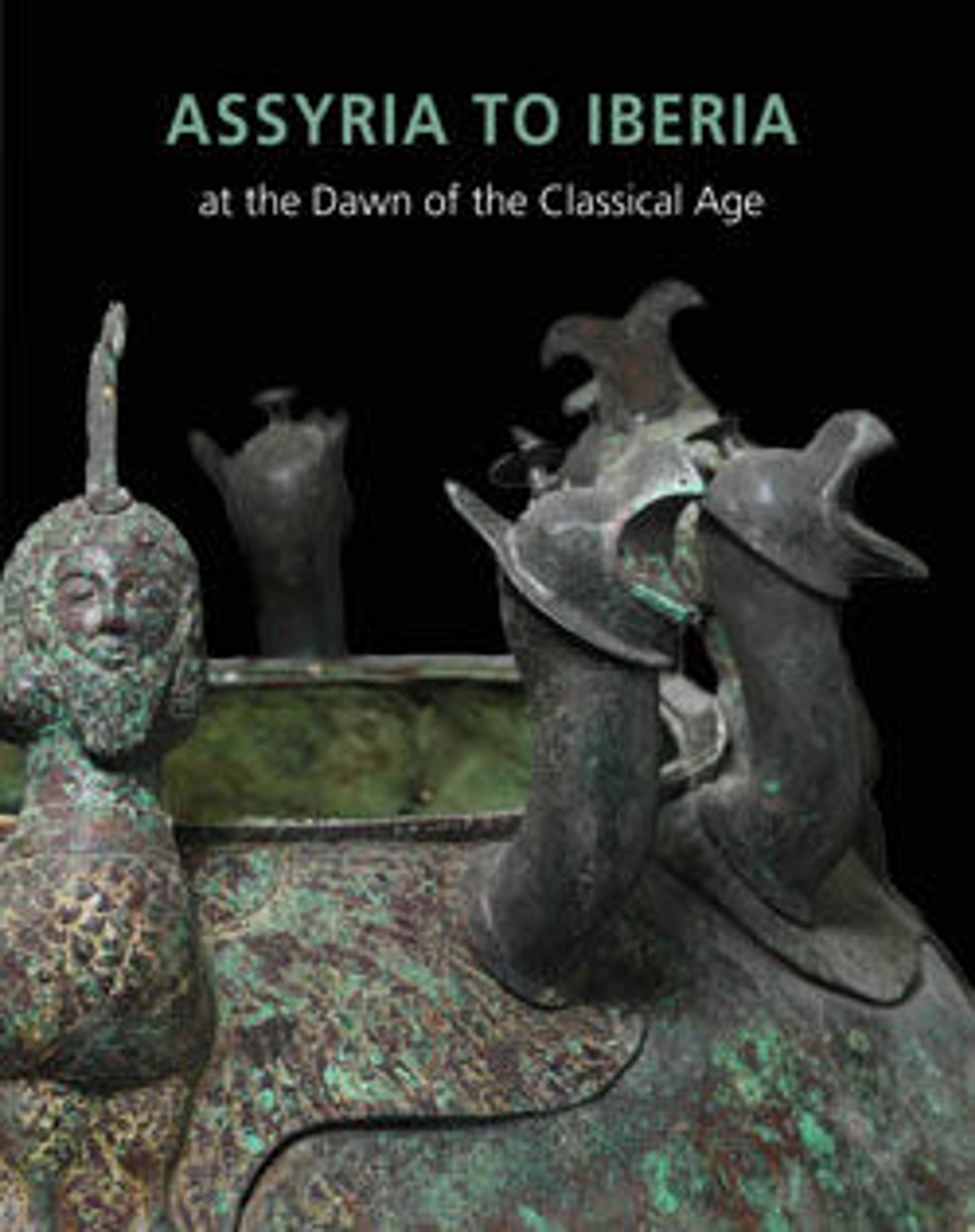Furniture plaques carved in relief with animal combat
These long ivory strips were found in a storage room in Fort Shalmaneser, a royal building at Nimrud that was used to store booty and tribute collected by the Assyrians while on military campaign. Since the wooden frame to which the ivory panels were attached had disintegrated, it was not possible to fully reconstruct the piece of furniture to which they belonged. They were probably part of a bed or couch, judging from the large panel associated with them, which is also in the Metropolitan Museum’s collection (59.107.1). Both strips show lions attacking bulls, with half a rosette on one end and a flat edge with a dowel hole on the other end. Originally, the two strips were probably connected to form a single strip, with the half-rosettes lined up to join each other. The dowel holes likely aided the attachment of the ivory veneer to a frame. Slight differences in the carving of the strips led the excavator, Max Mallowan, to suggest that they were carved by two different artisans.
Built by the Assyrian king Ashurnasirpal II, the palaces and storerooms of Nimrud housed thousands of pieces of carved ivory. Most of the ivories served as furniture inlays or small precious objects such as boxes. While some of them were carved in the same style as the large Assyrian reliefs lining the walls of the Northwest Palace, the majority of the ivories display images and styles related to the arts of North Syria and the Phoenician city-states. Phoenician style ivories are distinguished by their use of imagery related to Egyptian art, such as sphinxes and figures wearing pharaonic crowns, and the use of elaborate carving techniques such as openwork and colored glass inlay. North Syrian style ivories tend to depict stockier figures in more dynamic compositions, carved as solid plaques with fewer added decorative elements. However, some pieces do not fit easily into any of these three styles. Most of the ivories were probably collected by the Assyrian kings as tribute from vassal states, and as booty from conquered enemies, while some may have been manufactured in workshops at Nimrud. The ivory tusks that provided the raw material for these objects were almost certainly from African elephants, imported from lands south of Egypt, although elephants did inhabit several river valleys in Syria until they were hunted to extinction by the end of the eighth century B.C.
Built by the Assyrian king Ashurnasirpal II, the palaces and storerooms of Nimrud housed thousands of pieces of carved ivory. Most of the ivories served as furniture inlays or small precious objects such as boxes. While some of them were carved in the same style as the large Assyrian reliefs lining the walls of the Northwest Palace, the majority of the ivories display images and styles related to the arts of North Syria and the Phoenician city-states. Phoenician style ivories are distinguished by their use of imagery related to Egyptian art, such as sphinxes and figures wearing pharaonic crowns, and the use of elaborate carving techniques such as openwork and colored glass inlay. North Syrian style ivories tend to depict stockier figures in more dynamic compositions, carved as solid plaques with fewer added decorative elements. However, some pieces do not fit easily into any of these three styles. Most of the ivories were probably collected by the Assyrian kings as tribute from vassal states, and as booty from conquered enemies, while some may have been manufactured in workshops at Nimrud. The ivory tusks that provided the raw material for these objects were almost certainly from African elephants, imported from lands south of Egypt, although elephants did inhabit several river valleys in Syria until they were hunted to extinction by the end of the eighth century B.C.
Artwork Details
- Title: Furniture plaques carved in relief with animal combat
- Period: Neo-Assyrian
- Date: ca. 8th century BCE
- Geography: Mesopotamia, Nimrud (ancient Kalhu)
- Culture: Assyrian
- Medium: Ivory
- Dimensions: A: 1 3/4 × 21 13/16 × 1/2 in. (4.4 × 55.4 × 1.2 cm)
B: 1 7/8 × 21 11/16 × 1/2 in. (4.7 × 55.1 × 1.2 cm) - Credit Line: Rogers Fund, 1959
- Object Number: 59.107.2a, b
- Curatorial Department: Ancient West Asian Art
More Artwork
Research Resources
The Met provides unparalleled resources for research and welcomes an international community of students and scholars. The Met's Open Access API is where creators and researchers can connect to the The Met collection. Open Access data and public domain images are available for unrestricted commercial and noncommercial use without permission or fee.
To request images under copyright and other restrictions, please use this Image Request form.
Feedback
We continue to research and examine historical and cultural context for objects in The Met collection. If you have comments or questions about this object record, please contact us using the form below. The Museum looks forward to receiving your comments.
